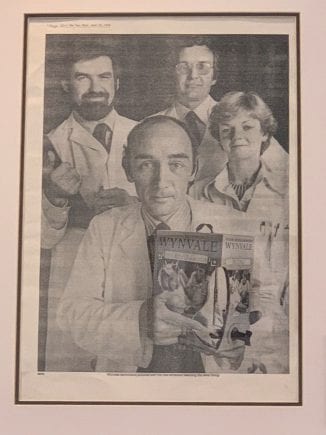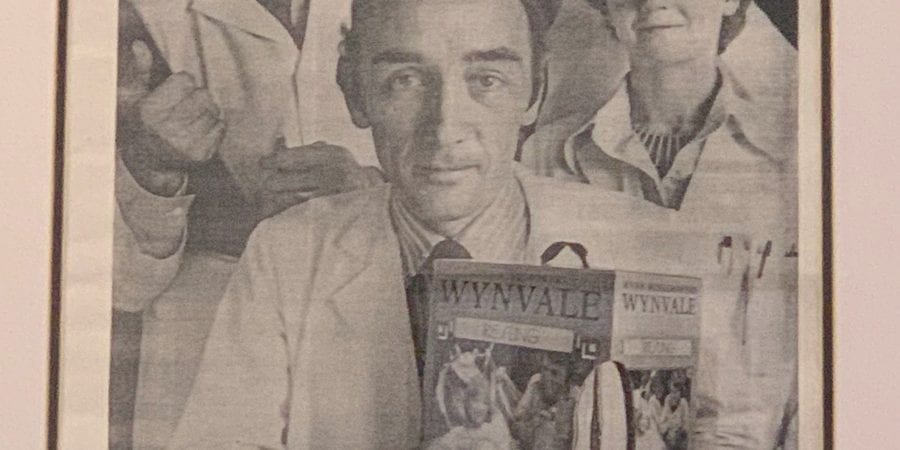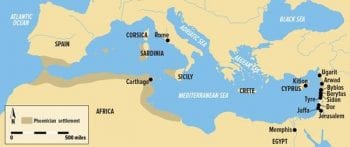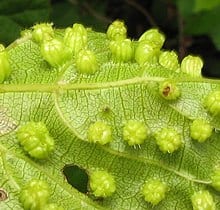Now, where was I?
Right… a couple of weeks back we covered what we know about where this wine thing all started and what it would have tasted like 8,000 odd years ago. Time to fast forward a few years.
Let’s have a look at how the production and consumption of wine grew throughout Europe and how it has spread to almost every corner of the globe. Now, we could talk about this for days on end and still not cover everything. But let’s face it… who has that sort of time these days? And we all know history is not really my thing. So in the interests of keeping this blog short, sharp and snappy, I have pulled together this handy timeline…
(I’ll add some links where I can in case you’re more interested in history than I am!)
1200 B.C. — 539 B.C.
The Phoenicians begin to trade across the Mediterranean, including the Middle East (current day Israel) and stretching around the sea from North Africa to points in Greece and Italy. It was during their trading that they also brought with them wine, transported in ceramic jugs, as well as grapevines. During travels, the Phoenicians come in contact with the Jews, who began to use wine to mark religious ceremonies. We first hear the mention of wine in the book of Genesis, when, after the flood, Noah, drunk on wine, exposes himself to his sons (as you do!).
Who the heck are the “Phoenecians”?
When I asked google to answer that questions it came back with…
“Phoenecia was a thalassocratic, ancient Semitic-speaking Mediterranean civilization that originated in the Levant, specifically Lebanon, in the west of the Fertile Crescent.
I’m sorry Google, but that DID NOT help AT ALL!
This map made things a little clearer…
800 B.C.
The Greeks, having been exposed (not in an indecent way this time) to wine by the Phoenicians, begin to perfect the beverage. Wine becomes a symbol for trade, religion, and health. A god is named in honor of wine: Dionysus. As the Greek city-states begin to rise in power, they colonise other land around the Mediterranean. After a new colony was conquered, Greeks would settle the area, bringing grapevines with them. Sicily and southern Italy formed some of the earliest colonies, and the wine then traveled up toward Rome.
200 B.C.
Roman soldiers are encouraged to drink 2–3 liters of wine a day for “good health” (I KNEW it!)
146 B.C.
The Romans take wine as their own and make wine a central part of their culture. They create their own god of wine – Bacchus. They build upon and formalise the Greek’s cultivation methods. Terroir is recognised and famous vintages are enjoyed for decades (see 121 B.C.). As the Empire and its troops expand across Europe, Romans plant grapevines in modern-day France, Germany, Italy, Portugal, Spain as well as a number of Central European nations.
121 B.C.
…is called the Opimian vintage, the best vintage of the Roman golden age. The vintage is named after consul Lucius Opimius.
77 A.D.
Pliny the Elder writes “vino veritas” or “In wine there is truth” in Naturalis Historia (a man well ahead of his time, obviously!)
380 A.D.
As the Roman Empire adopts the Catholic Church and Christianity, wine becomes a central part of the sacrament. This encourages the Catholic Church to focus on wine cultivation and production. Monks in Italy and France begin working as vintners, and winemaking technology is perfected. As the Catholic Church grows across Europe, wine goes with it.
1000 A.D.
Château de Goulaine is built in the Loire Valley (France). Possibly the oldest operating winery.
1492 — 1600
Wine travels to the “New World” and it’s brought to Mexico and Brazil by the conquistadors. Wine spreads across South America from these two original locales.
What is the “New World”?
You’ve probably heard the terms New and Old World when it comes to wine.
Basically, wines from the “New World” are those produced outside the traditional winegrowing areas of Europe and the Middle East. Think Argentina, Canada, Chile, New Zealand, South Africa, USA and of course, us!
“Old World” wines come from those places I’ve mentioned in the post up until now… France, Italy, Germany, Spain and Portugal.
In the late 1500s, wine was preserved for long shipping journeys by adding alcohol – a process called fortification. This process created the famed wines of Port, Madeira, Marsala and Sherry. Chile’s first winery was established in 1554.
The most highly desired wines of the day are sweet white wines such as Sauternes of Bordeaux, Riesling of Germany and Tokaji from Hungary.
1608
The French claim Canada as their territory in 1534, but they do not establish permanent settlements until 1608, when Samuel de Champlain founds Quebec City. Jesuits quickly follow and attempt to grow European grapes. They have little success so they turn to the local grapes.
1619
The French import French grapevines and begin cultivating wine in Virginia, USA.
~1650
Somewhere in Bordeaux, Cabernet Franc and Sauvignon Blanc naturally cross to create Cabernet Sauvignon.
1659
Grape vines are first introduced to South Africa which leads to the creation of the great sweet wine Vin de Constance.
1718
The abbey in Champagne publishes a set of winemaking rules said to be established by Dom Perignon for quality winemaking. It warned against using white grapes (Chardonnay) to keep wines from becoming sparkling from re-fermentation (considered a wine fault)!
1769
Spanish missionary Junípero Serra, having traveled from Spain to spread the gospel in the New World, travels to California from Mexico City, opening a mission in San Diego and bringing with him grapes in order to create the region’s first wine. Spanish missions then spread across California, and the Franciscan monks bring with them the art of making wine, establishing Sonoma’s first winery in 1805.
1785
Thomas Jefferson (3rd US president) is appointed the minister to France. Jefferson travels to France and falls in love with French wine, particularly Bordeaux and Burgundy. Jefferson becomes convinced wine of equal calibre can be produced in the US. He returns with more French grape cuttings, and a desire to see wine thrive in Virginia.
1788
The First Fleet, having departed the UK in 1787 in order to travel to Australia to establish the penal colony, makes a stop in South Africa. During the stop the fleet picks up grape cuttings that will be planted in Australia upon the fleet’s arrival
1832
James Busby, a British resident living in Australia who is considered the father of the Australian wine industry, is appointed to the position of British Resident of New Zealand by the British government. Busby travels from Australia to New Zealand and brings with him grape cuttings from Australia. He establishes New Zealand’s first vineyard in 1836.
1848 — 1855
Americans seeking to better their prospects travel west, bringing with them a desire for riches and a taste for wine. Their taste for wine not only increases demand for the wine already being made in California, but the gold rushers also bring with them vines from the East coast, most indigenous to France, but also Zinfandel – a grape that originated in Croatia for which California would become known.
1862
Louis Pasteur discovers oxygen’s harmful effects on wine causing the industry to adapt to wine bottles.
1890
Zinfandel is the most planted grape in America.
1863 – 1900
70% of vineyards in France are destroyed by Phylloxera.
Phylloxera is is a very small, yellow insect that feeds on the roots and leaves, of grapevines. It can also move to the soil surface and up into the canopy and the fruit.
In Australia Phylloxera is currently confined to regions in Victoria and New South Wales. South Australia, Western Australia, Northern Territory and Tasmania are designated ‘Phylloxera-free’. It remains one of the greatest biosecurity threats to vineyards.
1949
Bordeaux’s “vintage of the century”.
1870
Don Pascual Harriague, a French Basque immigrant plants Tannat vines – Uruguay’s ‘National Grape.’
1980
As the Chinese economy opens to the world under Deng Xiaoping, imports of French wine arrive. Today, the nation has grown into both one of the world’s largest consumers and producers of wine.
1964
The first bag-in-a-box wines are introduced. Maybe. As with all brilliant inventions, there seems to be some contention about this date. Read on for more information…
1969
Rob Moody‘s very first vintage

‘Wynnvale technicians pictured with the new winecask featuring the silver lining.’
1977
Our very own Rob Moody joins Wynns and, as Chief Winemaker, is involved in prolonging the shelf-life of bag-in-the-box wines!
Wynns had already established soft wine pack production by the time Rob started but he was involved in the process of developing the silver lining. Previously the shelf life was only 3 months under good conditions before signs of oxidation started.
The silver lining extended it to 8-9 months. Great work Rob! Where would we be without you?!
Rob thinks it was Angoves who developed the very first soft pack (around 1970) After that Penfolds developed a cylindrical metal can with a soft pack inside. Unfortunately, the taps were pretty dodgy and they kept getting sued for ruined carpets from leaking taps etc! Instead of fixing taps they just gave up on it!
Wynns developed really good taps as well as the new linings.
2000
France is the world’s largest producer of wine in the world. Italy is second.
2001
The first Somerled wine is produced!
2010
Cabernet Sauvignon becomes the world’s most planted wine grape.
2018
Phew!
We’ll have a couple of weeks break between lessons, but do join me for Part 3 when we’ll discuss the history of wine here in Australia.

 “Phoenecia was a thalassocratic, ancient Semitic-speaking Mediterranean civilization that originated in the Levant, specifically Lebanon, in the west of the Fertile Crescent.
“Phoenecia was a thalassocratic, ancient Semitic-speaking Mediterranean civilization that originated in the Levant, specifically Lebanon, in the west of the Fertile Crescent. Phylloxera is is a very small, yellow insect that feeds on the roots and leaves, of grapevines. It can also move to the soil surface and up into the canopy and the fruit.
Phylloxera is is a very small, yellow insect that feeds on the roots and leaves, of grapevines. It can also move to the soil surface and up into the canopy and the fruit.
Hullo Maree, just read Around the World in 80 days ( again ) what a good book, also just read your above around the wine world in two minutes, equally as brilliant. Keep it up, it is worth it for the readers.
Enjoy life, Froggy.
Awww… thanks Froggy. I’ll definitely keep it up. Even if it’s just for comments like this one!